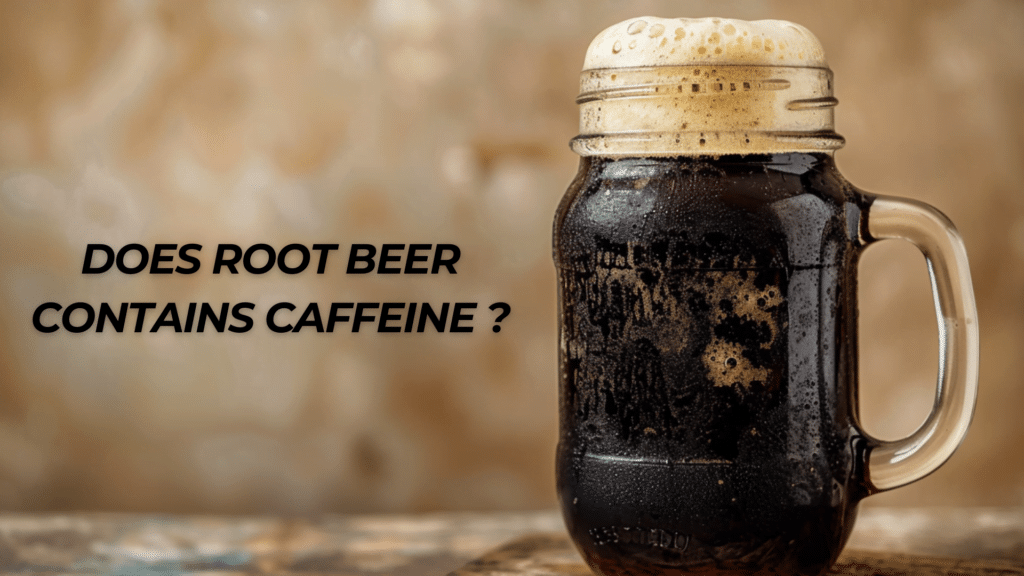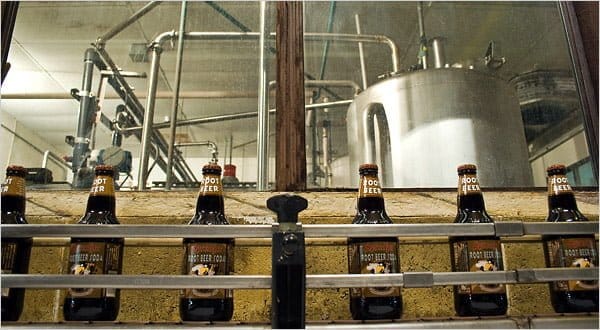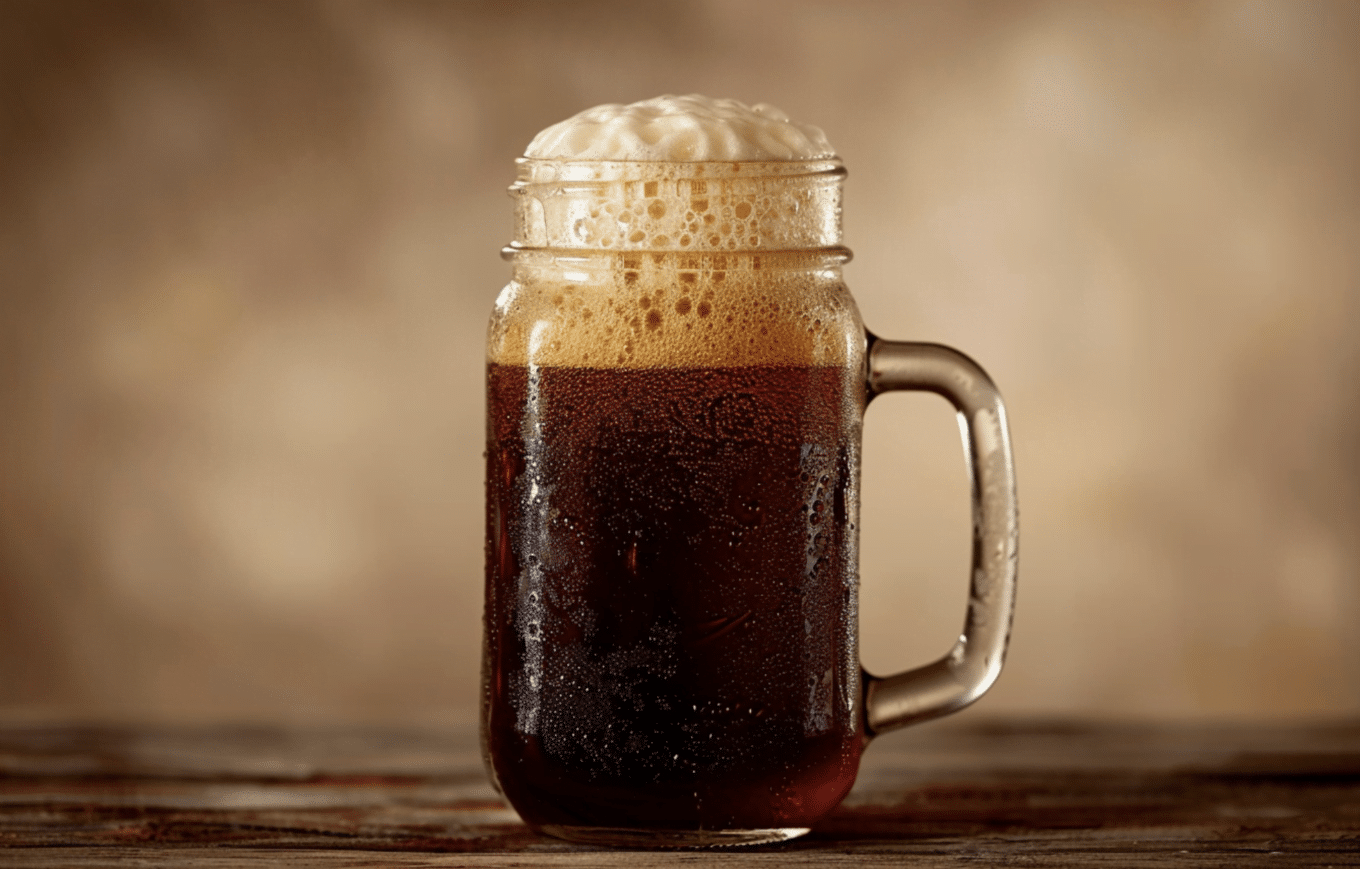Did you know your favorite root beer might have a surprising secret?
While many root beer fans love its smooth, creamy taste, some modern versions have caffeine, which is very different from the original recipe made from natural roots.
Discover the interesting story behind root beer with caffeine and learn the truth about this popular drink.
Join us as we look into the history of root beer, compare old and new recipes, and find out what affects its caffeine content.
Whether you’re a root beer enthusiast or simply curious about what’s in your drink, this article will provide you with the knowledge to make informed choices.
Get ready to expand your horizon associated with the long history of caffeinated root beer and its evolution to date!
Historical Background of Root Beer

Root beer, a beloved beverage with a rich history, is deeply rooted in the traditions of native American society.
The journey of root beer from a medicinal tonic to a widely consumed commercial drink is a fascinating tale of cultural exchange, adaptation, and entrepreneurship.
In this article, we will explore the rich history of root beer. We’ll start with its origins among Native Americans, who used sassafras and sarsaparilla.
Then, we’ll examine how European settlers adopted and adapted these ingredients.
Next, we explore the early commercialization of root beer. Finally, we’ll see how it transformed into a beloved drink enjoyed by millions today.
Origins in Indigenous American Traditions
Long before root beer became a popular beverage, Native Americans highly valued sassafras and sarsaparilla for their unique properties.
These plants played significant roles in traditional diets and medicinal practices.
Sassafras, native to North America, was used by various indigenous tribes for culinary and medicinal purposes.
They would create teas and infused beverages using the roots and bark of the sassafras tree, benefiting from its distinct flavor and perceived health benefits.
Similarly, indigenous peoples prized sarsaparilla, a tropical vine native to South and Central America, for its medicinal qualities.
The roots of the sarsaparilla plant were used to make healing tonics and beverages. Native Americans recognized the value of these ingredients and incorporated them into their daily lives.
The properties of sassafras and sarsaparilla made them valuable to indigenous communities.
Sassafras was known for its aromatic and flavorful qualities, while sarsaparilla was believed to have medicinal properties that could help reduce various diseases.
These ingredients were used to create warming teas, refreshing beverages, and healing tonics, showcasing the ingenuity and resourcefulness of Native American traditions.

Adoption and Adaptation by European Settlers in America
As European settlers arrived in the Americas, they quickly learned about the local ingredients used by Native Americans, including sassafras and sarsaparilla.
Absorbed by the unique flavors and potential health benefits, settlers began incorporating these ingredients into their brewing practices.
The settlers adapted the traditional Native American recipes to suit their tastes and brewing methods.
They experimented with different combinations of sassafras, sarsaparilla, and other native herbs and spices, creating new beverage forms that blended European and indigenous traditions.
These early adaptations laid the foundation for developing root beer as we know it today.
Early Commercialization and Widespread Use of Sassafras
As the popularity of sassafras-based beverages grew among European settlers, the transition from homemade recipes to commercial production began.
Charles Hires, a Philadelphia pharmacist, was one of the key figures in the early commercialization of root beer.
Other pharmacists and entrepreneurs followed suit, and numerous small-scale root beer manufacturers soon emerged across the United States.
The widespread use of sassafras in root beer production had a significant economic impact during this period.
The demand for sassafra root and bark increased, creating new opportunities for farmers and traders.
Root beer became a beloved beverage people from all walks of life enjoy.
The Surprising Caffeine Twist in America’s Beloved Root Beer

Root beer, a cherished American beverage with a rich history, has long been enjoyed for its distinct flavor and nostalgic charm.
But beneath its frothy surface lies a surprising twist: the presence of caffeine in some modern root beer brands.
This article takes you on a fascinating journey through the origins and evolution of root beer, from its Native American roots to its modern-day existence.
We’ll explore the factors that led to the introduction of caffeine in certain brands, the varying caffeine content across different products, and the implications for consumers seeking either a traditional caffeine-free experience or an extra energy boost.
Join us as we uncover the unexpected story behind the caffeine content in America’s beloved root beer and discover how this revelation might influence your next sip of this classic beverage.
A Classical Shift to Caffeinated Versions: The Case of Barq’s Root Beer
While root beer has traditionally been caffeine-free, some brands have started incorporating caffeine into their formulas.
This shift was driven by market demand and consumer preferences, as some root beer drinkers sought the added energy boost provided by caffeine.
His decision to introduce a caffeinated version of its root beer was a response to the growing popularity of other caffeinated beverages, such as colas and energy drinks.
He aimed to appeal to a broader consumer base and stay competitive by offering a caffeinated option.
Modern Production and Alternatives

Root beer production has evolved significantly from its traditional roots. Today, most commercial root beers are manufactured using industrial processes and a combination of natural and artificial ingredients.
While some root beer makers still rely on traditional brewing methods, most mass-produced root beers engage modern techniques to ensure consistency, efficiency, and cost-effectiveness.
The evolution of root beer production has shifted from using purely natural ingredients to incorporating artificial flavors, sweeteners, and preservatives.
Several factors, including the need for consistent flavor profiles, longer shelf life, and compliance with safety regulations, have driven this change.
Many modern root beers use artificial sassafras flavoring instead of the banned sassafras root bark.
In contrast, others rely on a blend of natural and synthetic ingredients to achieve the desired taste.
Top Brands and Their Caffeine Content Levels
In today’s market, root beer brands vary significantly in caffeine content.
While some brands have chosen to stick with the traditional caffeine-free formula, others have added caffeine to their recipes.
The table below provides a clear and concise overview of the differences in caffeine between several well-known root beer brands:
| Brand | Caffeine Content (per 12 oz) |
|---|---|
| Barq’s Root Beer | 22 mg |
| Dunkin’ Coffee Porter | 2.7 mg |
| Mug Root Beer | Caffeine-free |
| A&W Root Beer | Caffeine-free |
| Kona Pipeline Porter | 2 mg |
Health Implications of Consuming Caffeinated vs. Non-Caffeinated Root Beer

When choosing between caffeinated and non-caffeinated root beer, consider the health implications.
Caffeinated root beers offer temporary energy boosts and enhanced alertness but may cause sleep disruption, increased heart rate, and potential addiction if consumed excessively.
Non-caffeinated root beers provide a traditional, naturally caffeine-free option suitable for those sensitive to caffeine, pregnant women, or individuals reducing their intake. They allow consumers to enjoy the unique flavor without the side effects.
When choosing, consider your lifestyle, health objectives, and personal preferences. Read labels carefully, be mindful of caffeine intake, and make informed decisions based on your needs and goals.
Understanding the potential health implications will help you choose the root beer that best aligns with your well-being and enjoyment.
The table below provides a clear, concise comparison of the potential health implications of caffeinated and non-caffeinated root beer. It highlights important considerations for individuals based on their health needs and lifestyle choices.
| Health Factor | Caffeinated Root Beer | Non-Caffeinated Root Beer |
|---|---|---|
| Energy and Alertness | It provides a temporary energy boost and enhances alertness. | Does not stimulate or enhance alertness due to a lack of caffeine. |
| Sleep and Relaxation | It may disrupt sleep patterns due to caffeine content, affecting relaxation and sleep quality. | Better suited for consumption closer to bedtime without disrupting sleep. |
| Heart Rate and Cardiovascular | It can increase heart rate and potentially affect those with cardiovascular conditions. | It is less likely to affect heart rate and cardiovascular system due to the absence of caffeine. |
| Addiction and Dependency | Potential for addiction or dependency if consumed in large amounts frequently due to caffeine. | There is a lower risk of addiction or dependency as it lacks caffeine. |
Legal and Health Considerations Affecting Ingredient Choices
The use of sassafras in root beer production faced a significant challenge in 1960 when the United States Food and Drug Administration (FDA) banned safrole, a compound found in sassafras root bark, due to health concerns.
A study published by the National Library of Medicine on December 21, 2021, highlighted the potential hazards of safrole, indicating its harmful nature and its link to carcinogenic substances.
As a result, root beer manufacturers were forced to reformulate their recipes and find alternative ingredients to recreate the distinctive flavor of sassafras. Some brands turned to artificial sassafras flavoring, while others experimented with different herbal combinations.
The need to find suitable replacements for sassafras also contributed to the introduction of caffeine as an ingredient in some root beer brands, as it enhanced flavor and provided a unique selling point.
Final Thoughts
From its humble beginnings in Native American traditions to the modern-day debate over caffeine content, root beer has undergone a fascinating evolution.
As we’ve discovered, whether root beer contains caffeine is more complex than it may seem.
Traditional recipes use natural ingredients like sassafras and sarsaparilla that don’t contain caffeine. Nowadays, some brands add caffeine to meet what modern consumers want.
Whether you prefer the classic, caffeine-free taste or the extra kick of a caffeinated version, root beer’s rich history and diverse offerings make it a beverage worth exploring.
So, the next time you reach for a frosty mug of root beer, take a moment to appreciate the complex journey that brought this beloved drink to your lips.




